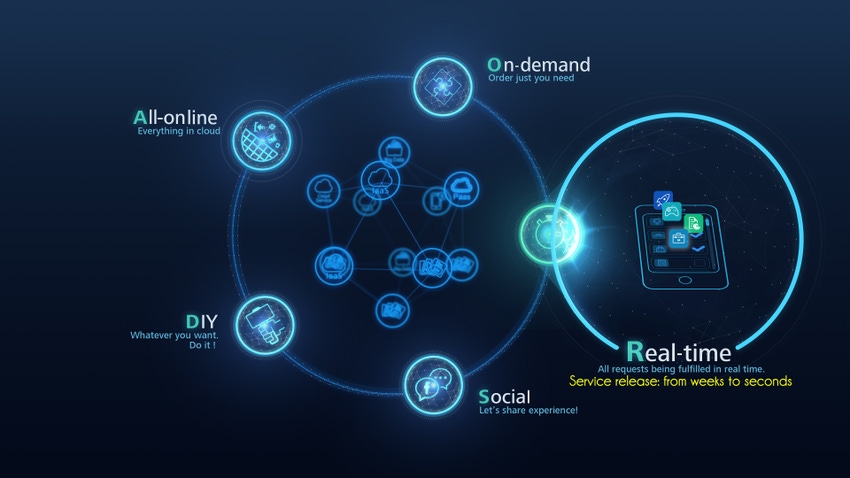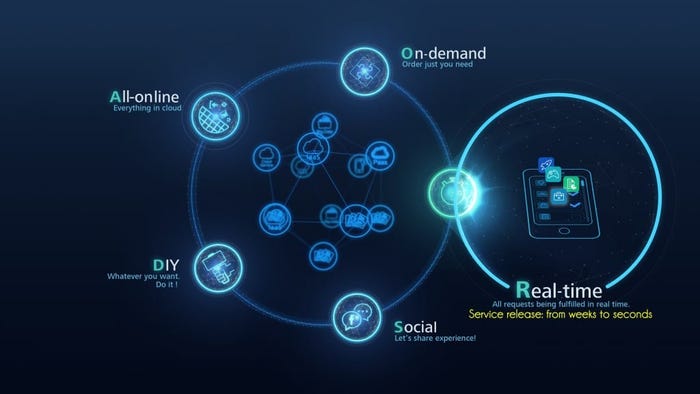The ROADS to Providing Peak Service Experience
HUAWEI VENDOR VIEW - Driven by an increased focus on services and software-led technologies, the telecoms industry continues to transform. Operators are facing pressures from OTT players and growing consumer demand for better, faster network coverage at all times. Huawei introduces its ROADS concept designed to help telcos optimise their businesses in the changing market, and take advantage of cross-industry digitalisation.
March 20, 2015

HUAWEI VENDOR VIEW – Driven by an increased focus on services and software-led technologies, the telecoms industry continues to transform. Operators are facing pressures from OTT players and growing consumer demand for better, faster network coverage at all times. Huawei introduces its ROADS concept designed to help telcos optimise their businesses in the changing market, and take advantage of cross-industry digitalisation.
Everyday, our physical and digital worlds become more and more intertwined, blurring the lines between online and off. So much of our daily lives are being sent, transferred, received, and stored in binary format as people can access the digital world anywhere, anytime. The digital economy is disrupting traditional markets, creating new business opportunities in sectors such as Industry 4.0, the Internet of Things, Big Data, e-commerce, telemedicine, and distance education.
The telecoms industry, which has enjoyed the benefits of booming populations, the mobile Internet and smartphones, has also faced developmental barriers due to surging bandwidth requirements and consumer service expectations. Carriers’ traditional voice and messaging services are being eroded by similar OTT applications and increasing consumer demand requires greater network coverage, bandwidth and quality, which leads to an increase in operating expenses for network expansions, upgrades, and maintenance. In order for the telecoms industry to remain competitive, the combined efforts of the entire industry are required.
ROADS to Optimal Service Experience for Telecoms Users
Central to the information age is the concept of data-based intelligence, and all-connection and zero-distance beyond time and space limitations. In order to achieve this, enterprises must adopt a consumer mindset, paying close attention to user perceptions and interests. User experience in the information age features five elements: real time, on-demand, all-online, DIY, and social; or ROADS for short.

R: Real-time
Real-time, zero-distance, and one-click-away service allows users to enjoy a new service in just seconds – from order generation and payment to system configuration – while in the past, the process might have taken hours, days, or even weeks. Real-time greatly improves customer satisfaction.
O: On-demand
On-demand allows users to customize their own services based on their actual needs. Current telecoms service packages offered by carriers are limited and customers want free package customization in terms of network bandwidth, capacity, time, and QoS.
A: All-online
Users have become accustomed to online services and entertainment. In the future, cloud technologies will enable even more services, including telecoms services, to be done online, which improves efficiency and reduces costs.
D: DIY
DIY allows users to participate in service development and optimization, which accelerates innovation and makes users feel more connected to services.
S: Social
Social networking platforms allow users to share experiences, insights, and views about online services. These platforms help to create fan bases, enhance user loyalty, and give users a sense of belonging.
ROADS is the external expression of a carrier’s user-centric operations in the information age. To live up to the requirements of ROADS, carriers must consider changing their business, R&D, service, and operations models as well as restructure their telecoms networks.
SoftCOM Builds Open ROADS
In order to deliver a ROADS experience to users, telecoms networks need a new technological system. Huawei has proposed a system called SoftCOM, which is a network development strategy that seeks to build a fully open ICT architecture to enable an industry shift from single vertical innovation to all encompassing innovation across the industry.
SoftCOM will reshape the telecoms industry in four key ways:
Architecture reconstruction: Building a data center-centered (DC-centered) ICT architecture to satisfy the development requirements of the information age.
In the information age, service provision, data exchange, and business activities will all be digitized. The storage, processing, and switching of information, and business processing and transactions all happen in data centers, so a DC-centered ICT architecture will be indispensable and data centers will become the telephone exchanges of the digital era.
Network reconstruction: Building flexible and intelligent networks and product architectures through SDN and NFV.
After the control and forwarding planes are separated and network resources virtualized, the network can be managed in a more unified and global manner to ensure better network resource scheduling, higher efficiency, and simpler software upgrades. Through the decoupling of hardware from software and NFV, functions of network devices will depend on more than a certain piece of hardware. Network elements can share the same hardware platform (a hardware resource pool) to realize flexible resource sharing. This way, networks can realize service automation and scalability based on service scale, and implement fault isolation and self-healing based on system autonomy. This improves network utilization and deployment, maintenance efficiencies, and accelerates service provision.
Service reconstruction: Going beyond connections and seizing the strategic opportunities of ICT “cloudification” based on new cloud computing business models to create the next phase in telecoms.
As cloud computing technologies mature, cloud services will become more widespread, creating an enormous market. Different businesses require different cloud services, which opens up countless strategic opportunities. The ICT infrastructure needed by enterprise cloud services is fundamental to carriers. Leveraging cloud computing for business model transformation, carriers will seize the opportunity created as enterprises shift their ICT infrastructure to the public cloud. A new telecoms market worth trillions of dollars will be created.
Operations reconstruction: Implementing digitized operations to achieve ROADS and shift the operational focus from internal control to external customer service.
The “all-connection” and “zero-distance” elements of the Internet shatter the limits of time and space. ROADS-oriented operations allow users to enjoy on-demand, real-time, and customized services in an all-online manner, and help carriers offer more intelligent customer service based on big data analysis, gain insight into customer requirements and carry out precision marketing. Social networking platforms aggregate industry innovations to offer a wide range of services.
The information age is a time of abundant change, with success becoming more and more tied to user experience. Telcos will not only survive, but thrive in this fiercely competitive market by creating a ROADS experience. Huawei will work with carriers and industry partners to build future-oriented telecoms networks and operations to help customers carry out their business transformations and build a better connected world.
Read more about:
Vendor SpotlightsAbout the Author(s)
You May Also Like











_1.jpg?width=300&auto=webp&quality=80&disable=upscale)


.png?width=800&auto=webp&quality=80&disable=upscale)